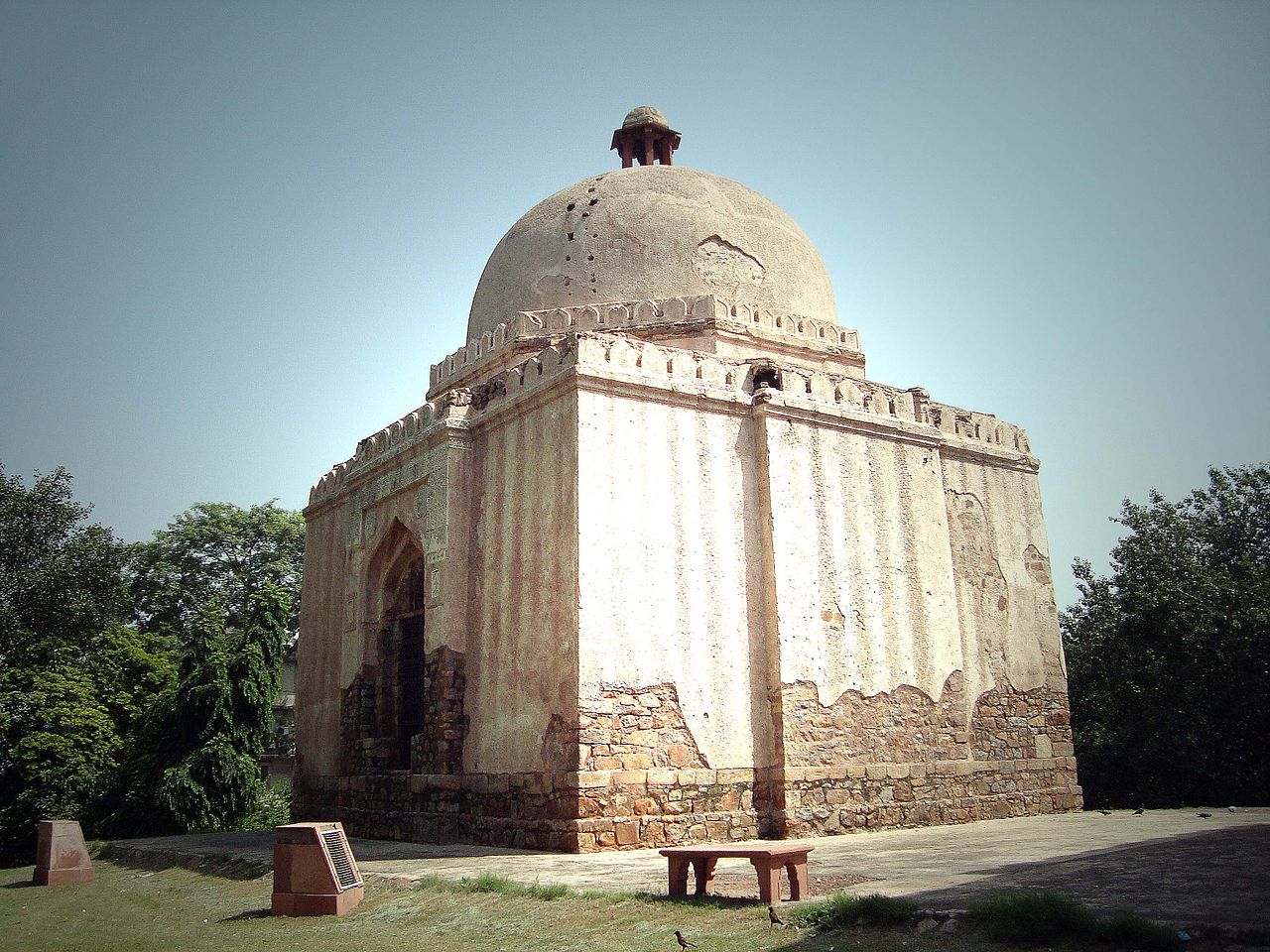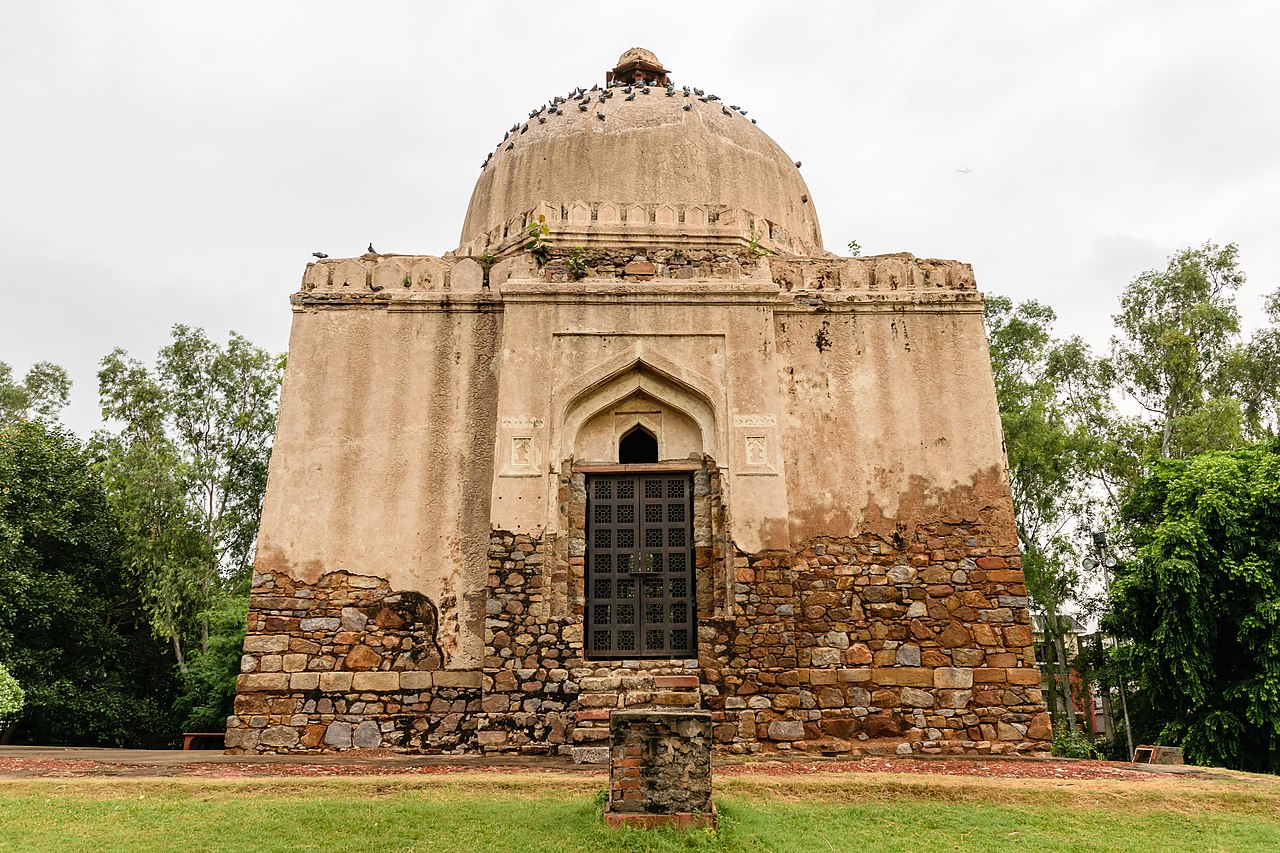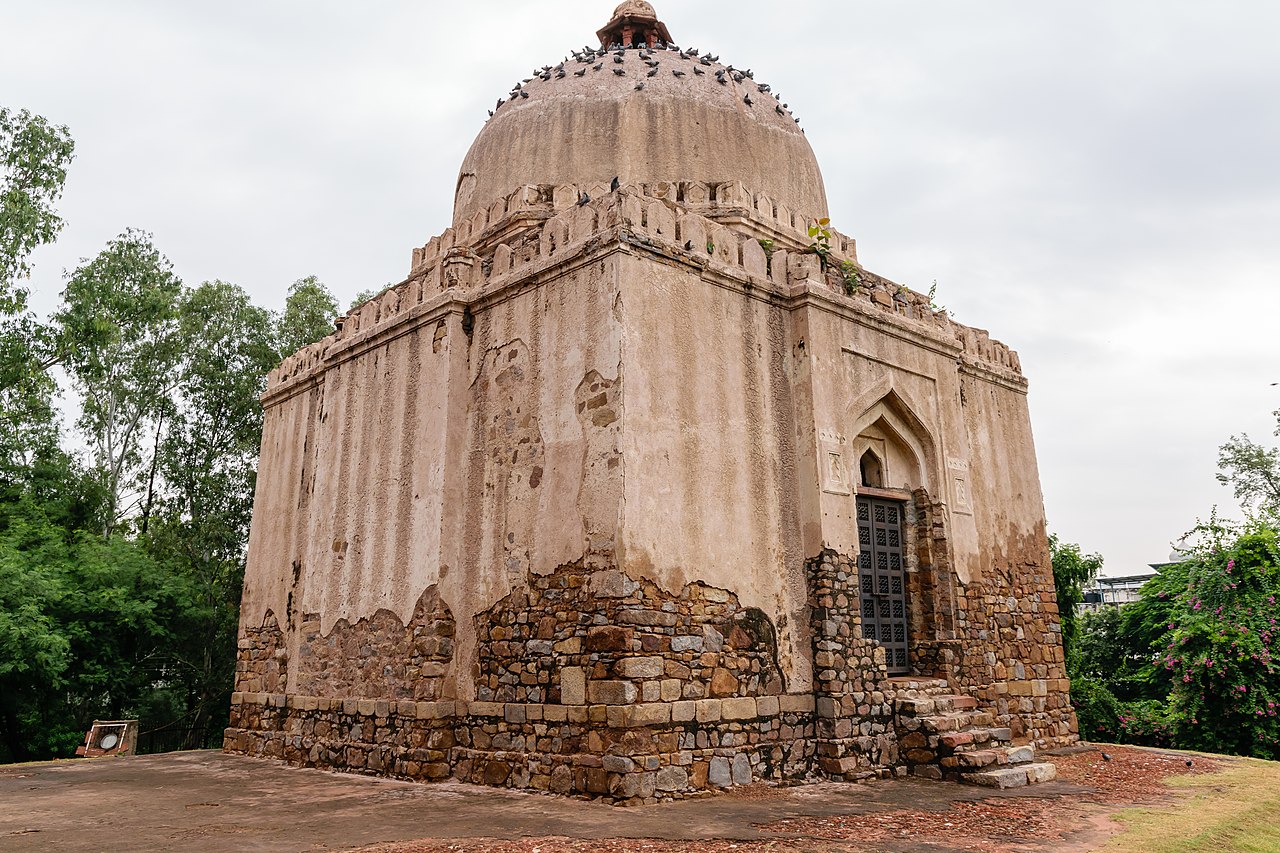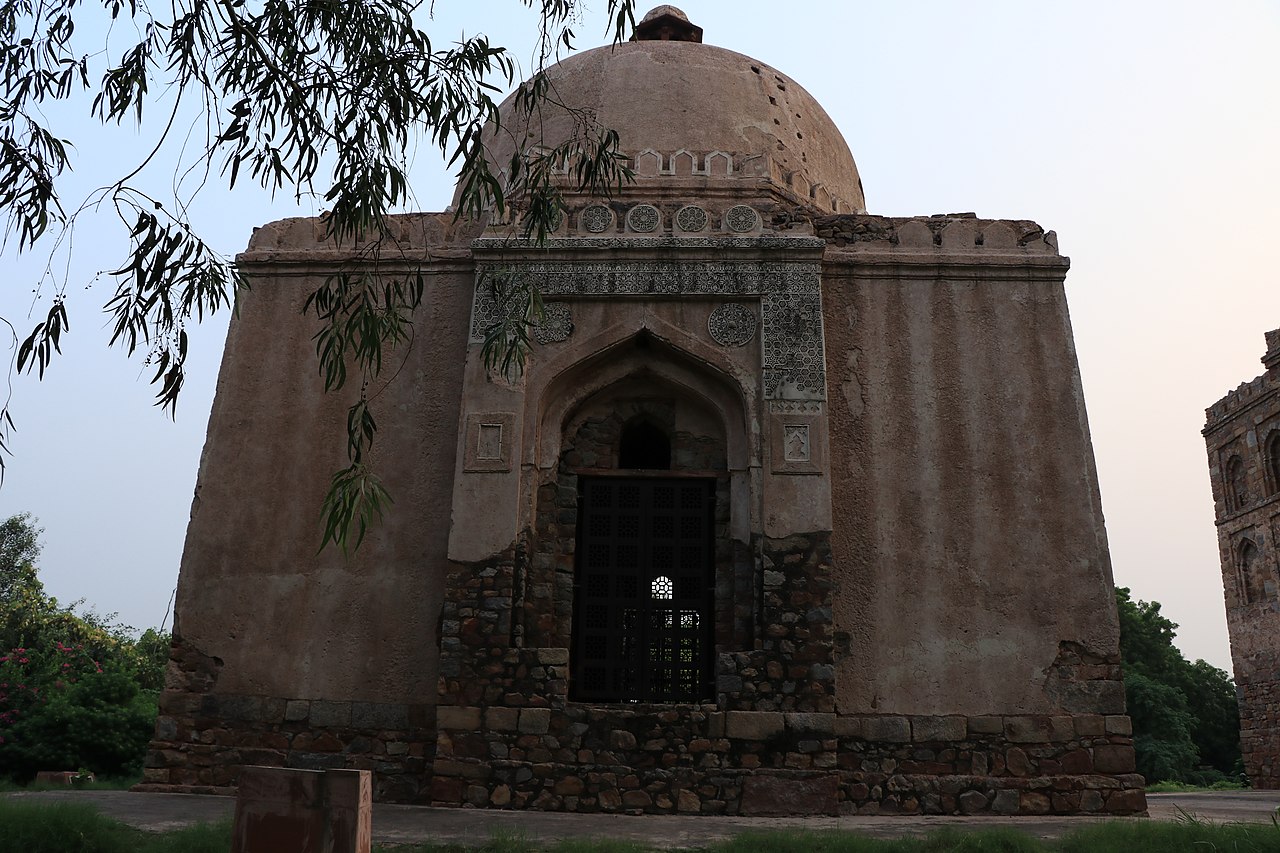



Poti ka Gumbad, situated in the Green Park area of South Delhi, is a smaller yet historically valuable tomb from the Lodi period, likely dating back to the 15th or early 16th century. This structure is often associated with the Dadi-Poti complex, with "Poti" translating to "granddaughter" in Urdu, while "Dadi" means "grandmother." Though there is no direct evidence of family ties between the figures commemorated in Dadi ka Gumbad and Poti ka Gumbad, these names suggest a symbolic or traditional connection, reflecting how locals relate to the monuments. Architecturally, Poti ka Gumbad showcases typical features of the Lodi era, with a square base, a prominent central dome, and arched openings. It is built using local stone, likely with plaster finishing, though much of this detail has eroded over time. The tomb’s design is more compact and modest than larger Lodi structures like the Shish Gumbad or Bada Gumbad in Lodi Gardens, yet it maintains the characteristic simplicity and symmetry valued during this era. Although surrounded by the vibrant neighborhood of Green Park today, Poti ka Gumbad faces challenges with urban encroachment, lack of awareness, and preservation issues. Protecting and promoting such sites can offer insights into Delhi’s medieval architectural evolution and the socio-cultural landscape of the Lodi period.